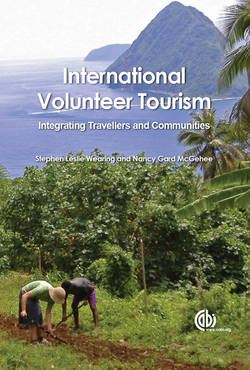Читать книгу International Volunteer Tourism - Stephen Wearing - Страница 13
На сайте Литреса книга снята с продажи.
The Growth in Volunteer Tourism
ОглавлениеVolunteer tourism is a rapidly growing phenomenon (Bakker & Lamoureux, 2008; Tourism Research and Marketing, 2008). A survey of over 300 volunteer tourism agencies worldwide indicated the market has grown to a total of 1.6 million volunteer tourists a year, with a value of £832 million-1.3 billion (US$1.7–2.6 billion) (Tourism Research and Marketing, 2008). However, accurately estimating volunteer tourism activity is difficult due to the diversity in volunteer and travel activities. According to Tourism Research and Marketing (2008: 5), volunteer tourism involves a combination of travel and voluntary (unpaid) work. At present, the majority of agencies providing volunteer tourism products are not-for-profit; however, there has been a steady increase in the number of commercial ventures now entering the market. Their activities (volunteer tourism agencies) have a considerable impact on the countries served, not only in terms of the fees paid directly to them by participants, but also because the volunteer travellers spend much larger sums of money funding their total travel plans — an average of over US$3000 a trip in 2007 (Tourism Research and Marketing, 2008: 5).
Other findings from the Tourism Research and Marketing (2008) report into volunteer tourism include:
• Volunteer tourists are more likely to be women than men.
• Seventy per cent of volunteer tourists are aged between 20 and 25.
• Motivations for volunteer travel include a mixture of volunteering, exploring other cultures, and working and studying abroad.
• Many volunteer tourists source their own placements once they arrive at their destination.
• Ninety per cent of volunteer tourists travel to Latin America, Africa or Asia.
Volunteer tourism encompasses a range of types including international gap-year travel, international volunteer development work, environmental project volunteering and travel that includes both tourism and volunteering. International gap-year travel has emerged as a significant player in global youth tourism in recent years. A ‘gap-year’ is defined as a nominal period during which a person delays further education or employment in order to travel (Millington, 2005). Although this interlude may be experienced at any point across the lifespan, it is within the period of late adolescence and early adulthood that the gap-year experience has become most popular. In Australia, the gap-year concept has only recently developed traction. Products designed for what has been evocatively branded by one major commercial travel service provider as the ‘Big Year Out’ are beginning to feature in commercial travel service providers’ promotional materials targeting young Australians.
In the UK, the international ‘gap travel’ sector is much more mature, having grown to become a significant element of outbound tourism, which is supported by an industry of commercial and NGO provider organizations (Simpson, 2004). In 2005, the gap-year in the UK was valued at £5 billion per annum with predictions that it will rise to £20 billion by 2015 (Ward, 2007).
Gap-year travel describes a wide array of activities. Some of these are considered hedonistic (Simpson, 2004), such as the popular and sometimes infamous budget coach-touring through Europe. Other forms of gap-year travel such as longer-term independent travel have also been criticized as a form of dropping out and escape (West, 2005). In recent years, there has been growing interest among young people in gap-year volunteer tourism. Gap-year volunteer tourists are those who use their gap-year to volunteer on a wide range of projects, particularly in the area of community development.
